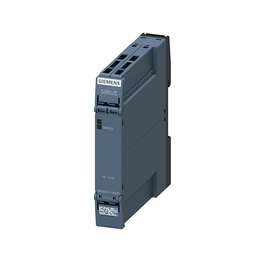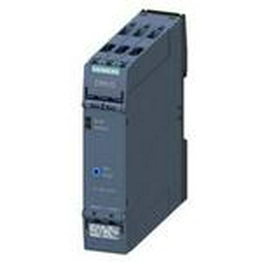Signal Relays
Results:Signal Relays Results:
Comprehensive
Price Priority
Stock Priority
Image
Part Number
Manufacturer
Description
Availability
Unit Price
Quantity
Operation

SIEMENS
Siemens control relay, 3RN2 series, , DPDT, DIN Rail installation
Quantity: 2
Ship Date: 7-13 working days
1+ $137.5932
-
+
Ext. Price: $137.59
MOQ: 1
Mult: 1

SIEMENS
Siemens control relay, 3RN2 series, , SPDT, SPST, DIN Rail installation
Quantity: 5
Ship Date: 5-10 working days
1+ $526.8622
-
+
Ext. Price: $526.86
MOQ: 1
Mult: 1

SIEMENS
Siemens control relay, 3RN2 series, , SPDT, DIN Rail installation
Quantity: 1
Ship Date: 7-13 working days
1+ $89.4756
-
+
Ext. Price: $89.47
MOQ: 1
Mult: 1

SIEMENS
Siemens control relay, 3RN2 series, , DPDT, DIN Rail installation
Quantity: 1
Ship Date: 7-13 working days
1+ $110.7227
-
+
Ext. Price: $110.72
MOQ: 1
Mult: 1

SIEMENS
Siemens control relay, 3RN2 series, , DPDT, DIN Rail installation
Quantity: 4
Ship Date: 5-10 working days
1+ $164.041
-
+
Ext. Price: $164.04
MOQ: 1
Mult: 1

SIEMENS
Siemens control relay, 3RN2 series, , SPDT, SPST, DIN Rail installation
Quantity: 5000
Ship Date: 4-8 weeks
30+ $391.4406
-
+
Ext. Price: $11743.21
MOQ: 30
Mult: 1
SPQ: 1

SIEMENS
Siemens control relay, 3RN2 series, , DPDT, DIN Rail installation
Quantity: 6
Ship Date: 5-7 working days
1+ $99.9833
5+ $96.1378
10+ $90.7541
-
+
Ext. Price: $99.98
MOQ: 1
Mult: 1

SIEMENS
Siemens control relay, 3RN2 series, , DPDT, DIN Rail installation
Quantity: 2
Ship Date: 7-13 working days
1+ $102.1186
-
+
Ext. Price: $102.11
MOQ: 1
Mult: 1

1+ $2673.2546
-
+
Ext. Price: $2673.25
MOQ: 1
Mult: 1

SIEMENS
Siemens control relay, 3RN2 series, , SPDT, DIN Rail installation
Quantity: 5
Ship Date: 7-13 working days
1+ $60.0569
-
+
Ext. Price: $60.05
MOQ: 1
Mult: 1

SIEMENS
Siemens control relay, 3RN2 series, , DPDT, DIN Rail installation
Quantity: 9
Ship Date: 7-13 working days
1+ $107.1009
-
+
Ext. Price: $107.10
MOQ: 1
Mult: 1

1+ $337.6039
-
+
Ext. Price: $337.60
MOQ: 1
Mult: 1

1+ $229.8301
-
+
Ext. Price: $229.83
MOQ: 1
Mult: 1














